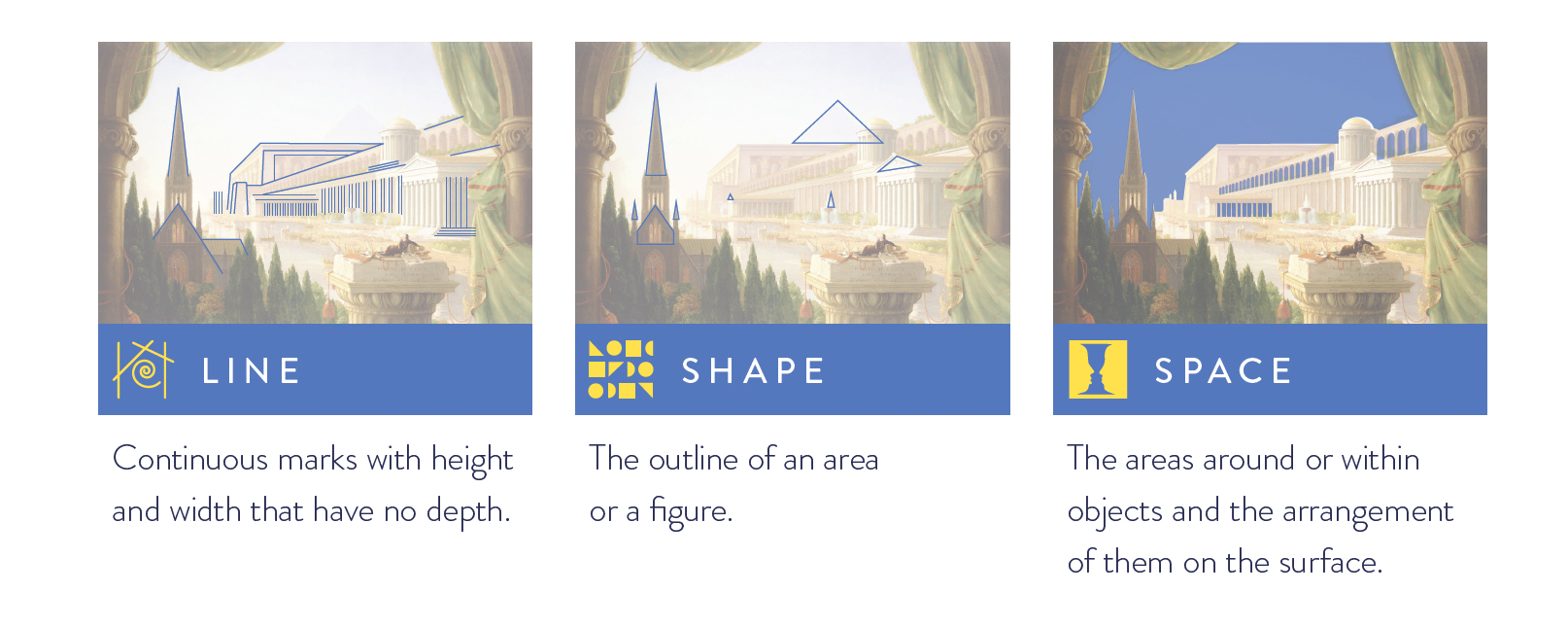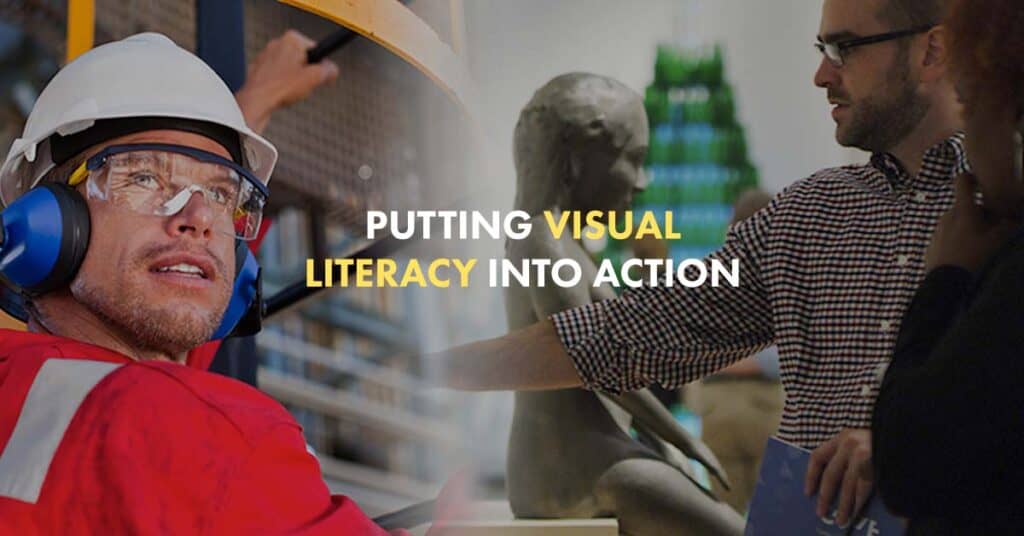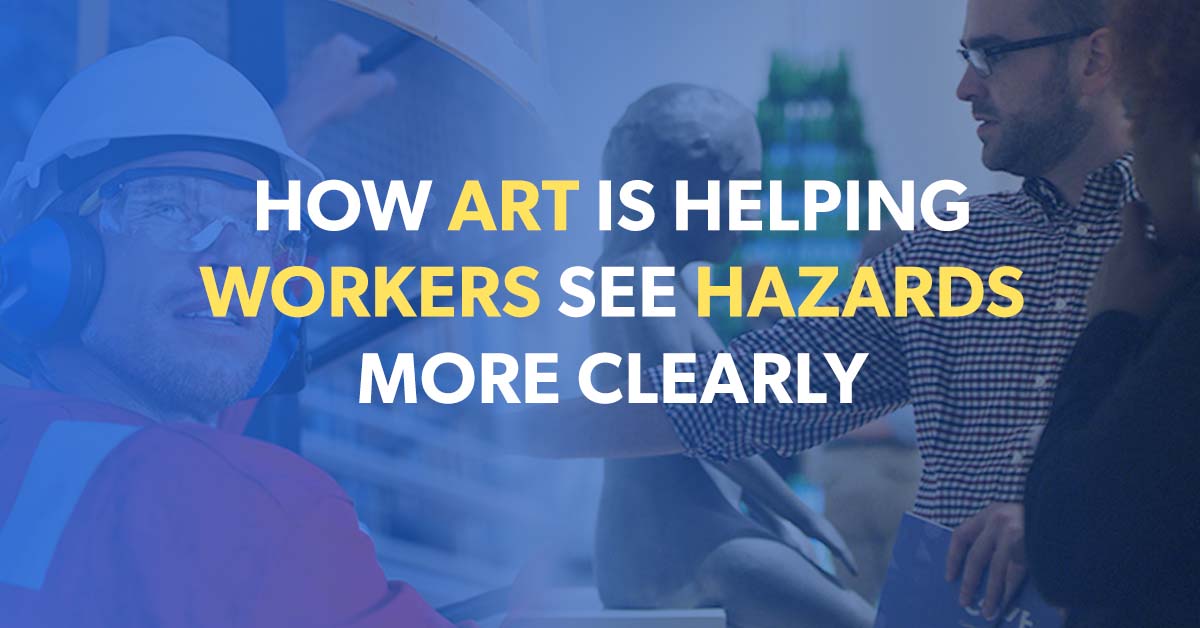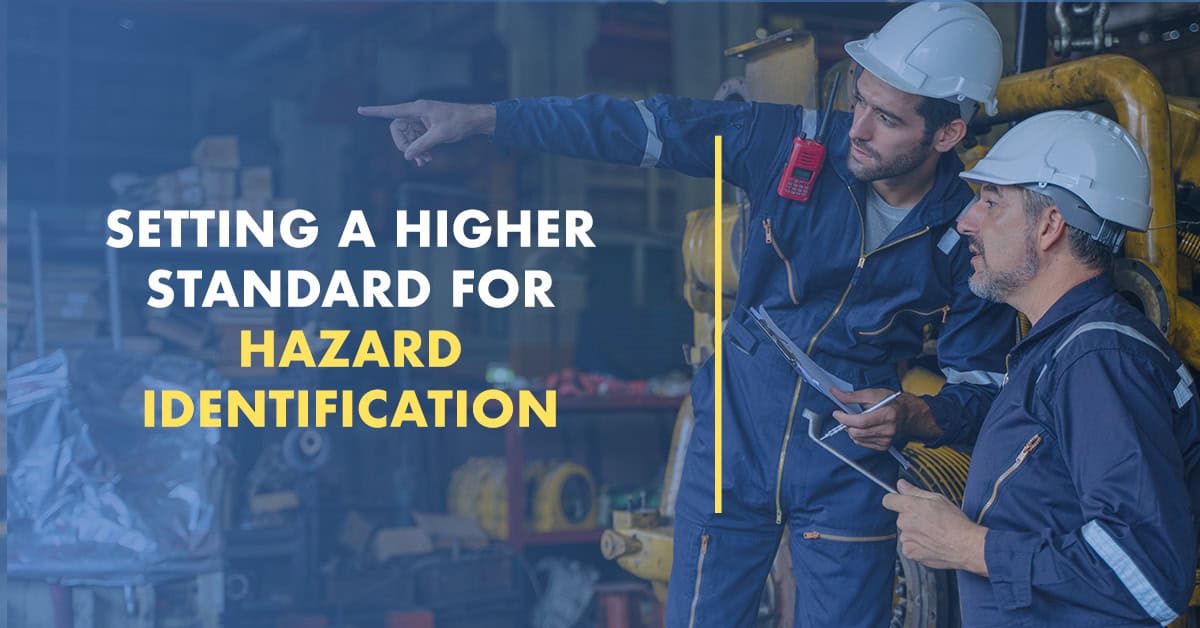Every day we ask people to perform tasks that require seeing. We train people to do many things. But do we teach people how to see? Our safety and the safety of others depends on it.
Describe What You See
Describing can help you to identify and organize your thoughts about what you have seen. It may be helpful to think of ‘describing’ as taking a careful inventory. An inventory is only valuable, however, if it objectively catalogues the scene. The first step in unbiased description is to identify the Elements of Art within a composition. While we think of a composition as being a work of art, our work environment is also a composition of activity and the physical environment where hazards may exist.
The Elements of Art

Applying ‘The Elements of Art’
This exercise focuses your attention on three of the Elements of Art to strengthen your ability to interpret and communicate what you are seeing.

Take a minute to look at The Architect’s Dream by Thomas Cole, from the Toledo Museum of Art Collection. What do you see? Learning a common language, such as the Elements of Art, is a good approach to help us describe accurately.
 Using the ‘Elements of Art’ in Hazard Recognition
Using the ‘Elements of Art’ in Hazard Recognition
Using the ‘Elements of Art’ as a visualization and communication tool can help focus attention on operational areas of safety. Now that you are familiar with this common language and principles, take a minute to look at this image of a worksite.

- Does looking at lines focus your eye to areas you may not have noticed before?
- By focusing on shapes do you see objects that your eyes first overlooked?
- When looking at space are you able to see conditions that you didn’t notice at first?
Next Steps
The Elements of Art is just one of the Visual Literacy tools we use to teach individuals how to see their environments more completely. Join us for an upcoming Workshop to learn more about these tools and techniques and how to apply them to your existing safety programs.




